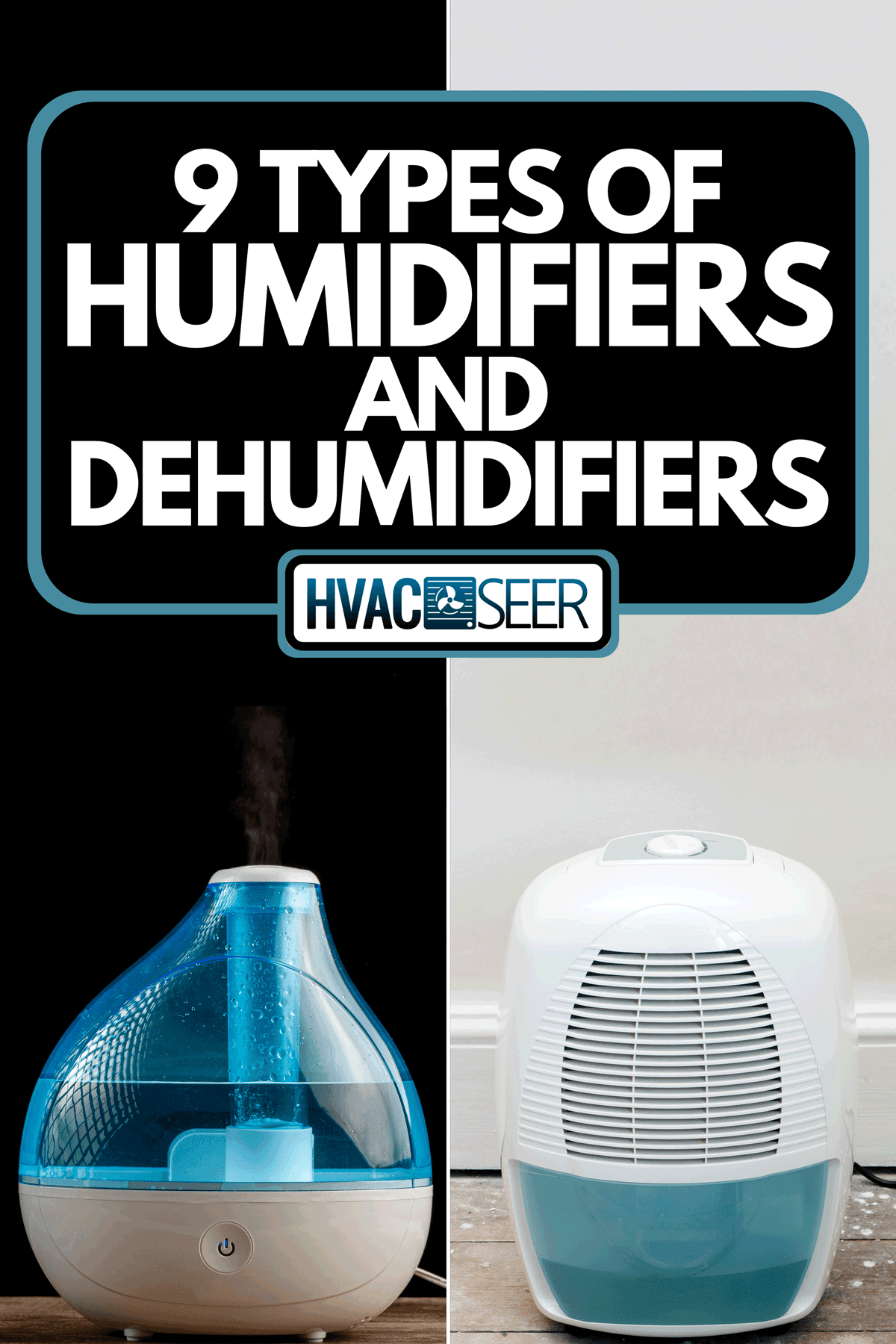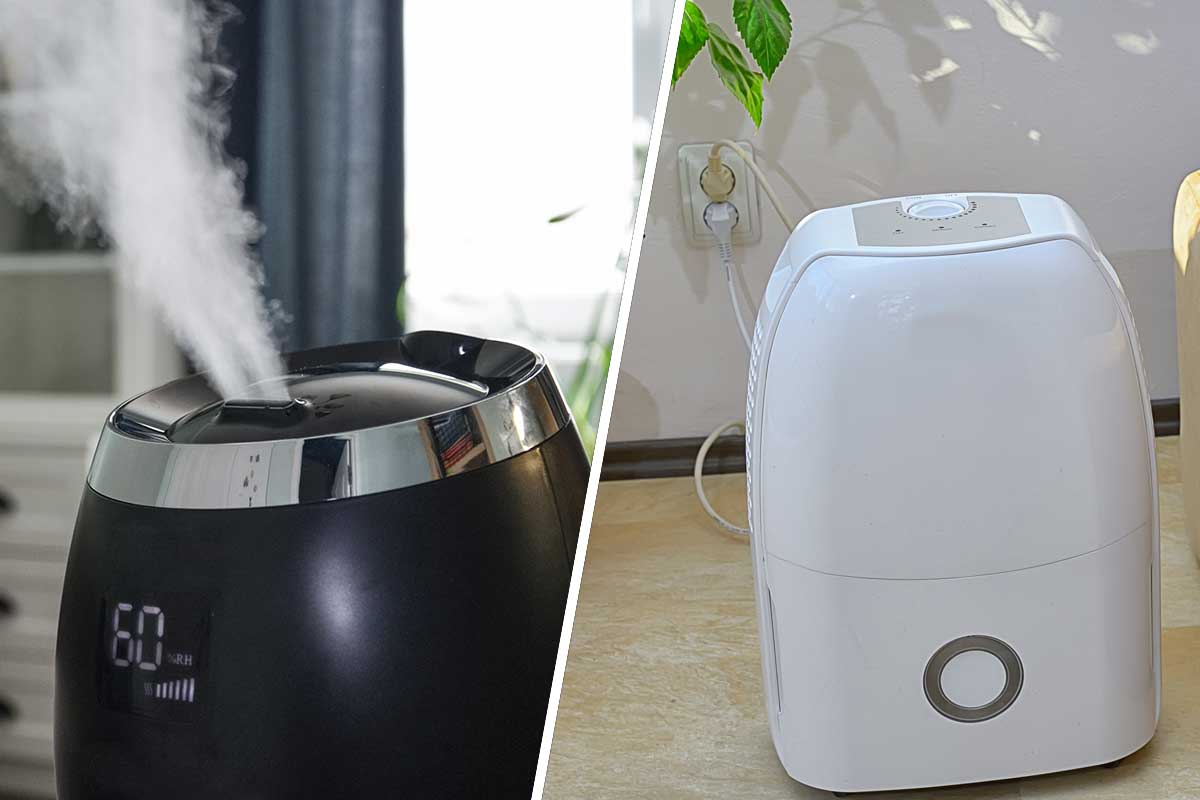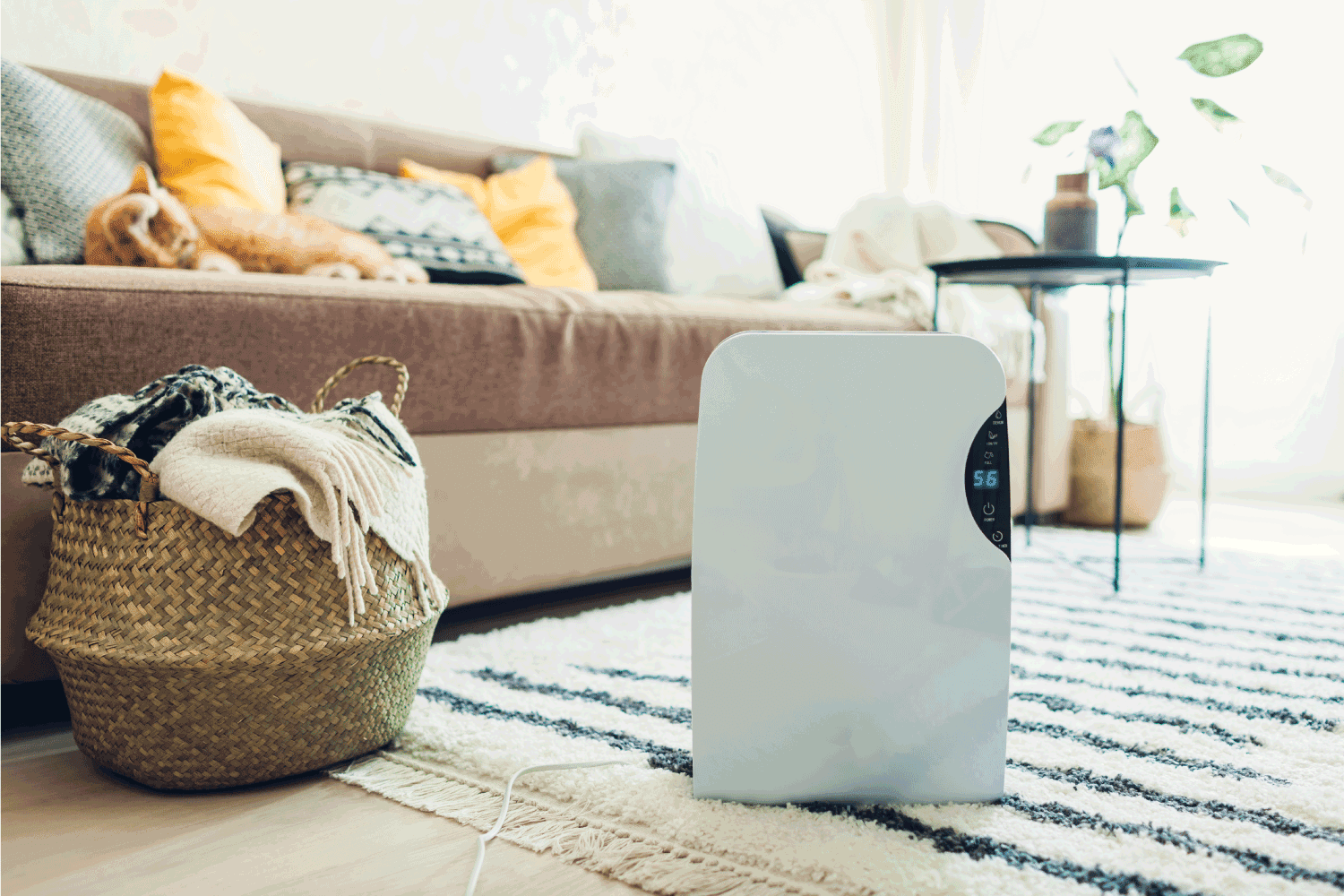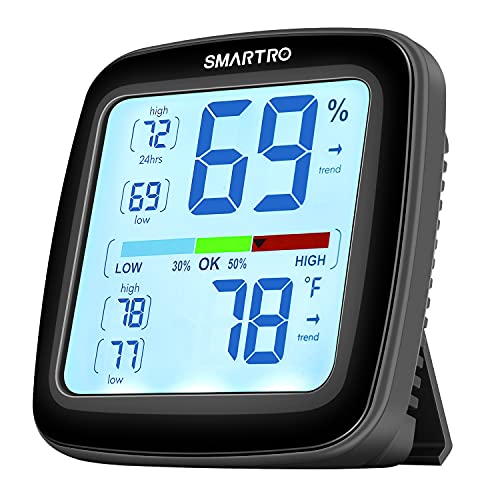Increasingly, the humidity of our indoor air is recognized as important to our health. However, the wide range of humidifiers and dehumidifiers on the market makes choosing the right product daunting. Never fear; in this post, we gather up-to-date information to make your choice an easy one.
There are currently many types of humidifiers and dehumidifiers on the market for those interested in controlling the humidity of their indoor air. Options include:
- Humidifiers
- Cool Mist
- Evaporators
- Ultrasonic
- Impeller
- Warm Mist
- Cool Mist
- Dehumidifiers
- Refrigerant
- Desiccant
- Room or Smaller
- Whole House
Keep reading the rest of this post for details on each of the above humidifier and dehumidifier types. Reading this guide will earn a solid foundation to help you pick the appropriate appliance for your needs. To begin, we cover basic information regarding humidifiers and dehumidifiers.

What's the difference between a humidifier and a dehumidifier?
Both humidifiers and dehumidifiers change the water content of your indoor air. Humidifiers add water content, while dehumidifiers remove water content. These devices have these names because the water content of the air is known as humidity.

How do you know if you need a humidifier or dehumidifier?
According to this article by the New York City Health Department, the ideal indoor humidity ranges from 30 percent to 60 percent. By this advice, you should humidify your home if it falls below this range and dehumidify if it falls above this range.
Click here for a home hygrometer from Amazon.
To understand what the humidity of your home is, consider buying an at-home humidity sensor, technically known as a hygrometer. These devices are relatively cheap and relatively accurate.
However, the range recommended as healthy is quite wide, at 30 percent. Therefore, you are more likely to need to change your indoor humidity up or down within the recommended range. In this case, you are changing the humidity for personal comfort and health.
For instance, if you find that your skin is routinely dry and cracked or your throat is usually parched, consider raising the humidity. On the other hand, consider lowering the humidity if you have trouble drying off after a shower or notice any mold growth in your home.
Humidifiers

The two main types of humidifiers are cool mist and warm mist humidifiers. Within the cool mist category, there are three different types. These types are known as evaporators, ultra-sonic humidifiers, and impeller humidifiers. All of these types of humidifiers work using different technologies.
Cool Mist
Cool mist humidifiers are so-called because they do not require heat to add humidity to the air. This makes cool mist humidifiers much more appropriate for hot climates and use around children.
Click here for a cool-mist humidifier from Amazon.
Instead, cool mist humidifiers use three different technologies to add humidity to the air. These methods are covered in the following sub-sections.
Take note; all cool mist humidifiers run the risk of being a harbor for bacteria and mold. If not cleaned regularly, especially if left unused, the water and moisture in these devices will eventually start to grow nasty organisms you do not want in your home.
Evaporators
Evaporative humidifiers are the most common and more affordable humidifier types. These humidifiers work through a fan that blows air across a moistened membrane or cloth. As that air comes into contact with the wet area, the humidity of the air increases.
Click here for an evaporative humidifier from Amazon.
Since evaporative humidifiers blow the air through/across a wet filter, they do have the advantage of offering some additional air filtration. This, however, does come with a downside. You will need to clean or replace these filters relatively regularly.
Ultrasonic
Ultrasonic humidifiers function using much more modern technology and do not require a filter of any type. These humidifiers create an ultrasonic sound wave that excites water molecules into a gaseous state.
Click here for an ultrasonic humidifier from Amazon.
Despite the use of sound waves, ultrasonic humidifiers are generally quieter than their cousin, the evaporative humidifier. On the other hand, ultrasonic humidifiers often fall on the higher end of the cost spectrum.
Impeller
Impeller humidifiers use what amounts to a submerged spinning fan to kick up water droplets that diffuse into the structure of your air through a comb-like feature. As the name sounds, impellers are propellers that pull instead of push.
Click here for an impeller humidifier from Amazon.
Impeller humidifiers have the advantage of pumping out a lot of very cool feeling mist into the surrounding air.
Warm Mist
As the name implies, warm mist humidifiers use heat to increase the humidity of the air. It eventually changes from a liquid state to a gaseous state as water heats. Therefore, warm mist humidifiers have built-in heating elements to essentially boil off water.
Click here for a warm-mist humidifier from Amazon.
The downsides of these types of humidifiers are they add heat to the air, and they are dangerous because the heat is both a fire hazard and a risk to children. Remember, if you live in a cold climate, the added heat may be a bonus.
Further, warm mist humidifiers are much less likely to develop mold and bacteria problems because these organisms struggle to survive in very hot water.
Dehumidifiers

Dehumidifying a room is generally seen as more difficult than humidifying a room. However, there are still a couple of viable options for accomplishing this goal, including refrigerant and desiccant humidifiers. We cover each of these types in the following subsections.
For dehumidifiers to work, it is essential that you regularly dump any captured water and never let the appliance's reservoir overfill.
Refrigerant
Refrigerant dehumidifiers work because warm air can hold more moisture than cold air. This fact is well displayed by the condensation that appears on your windows during the winter. What happens is that as the air next to the window cools, some of its moisture/humidity falls out onto the window.
Click here for a refrigerant humidifier from Amazon.
Refrigerant dehumidifiers create cold surfaces through chemical reactions and several substances known as refrigerants. As the room temperature air hits the cold surface, some of the humidity condenses. This condenses water is then directed to drip into a holding tank.
Over time, this process removes enough water from the air to significantly change the indoor humidity. Unfortunately, refrigerants can only create surfaces that are so cold. Therefore, refrigerant dehumidifiers do not work nearly as well in very cold environments.
Another downside of these dehumidifiers is their use of refrigerants. While usually very well contained within the appliance, these chemicals can be dangerous if handled or inhaled. This is a rare occurrence but if you have a refrigerant spill, ensure you take proper precautions or call a professional.
Desiccant
Desiccant dehumidifiers are sold in a wide range from simple single-use products to products that require electricity and last a long time. These dehumidifiers rely on materials that can absorb a large amount of water out of the air.
Click here for an electronic desiccant humidifier from Amazon.
Those small silica gel packets found in some food packaging and with electronics are examples of desiccants. Some very cheap desiccant dehumidifiers are essentially this same product but in a larger package. These small desiccants are appropriate for small and temporary dehumidifying needs.
On the other hand, some desiccant dehumidifiers combine moisture absorption with moisture retention. The absorbent material is dried out, the water is collected in a tank, and the desiccant can reabsorb more air. These are great options for more continuous and larger dehumidifying tasks.
Room or Smaller
This type of humidifier or dehumidifier can be comprised of any of the technologies discussed above. However, they are specifically sized and geared to only work in a single room or part of a room.
Click here to see this on Amazon.
Room humidifiers or dehumidifiers are best used if you are trying to change the moisture content of a bedroom or bathroom but are not dealing with inappropriate humidity in a whole house.
Almost all humidifiers and dehumidifiers are sold with labels that demarcate how many square feet they are designed to work on. Match this number up to the needs you have at home.
Whole House
Whole-house dehumidifiers or humidifiers are often installed in conjunction with your HVAC system. This works because all the air in your home is already being cycled through a central point to be heated or cooled.
Click here to see this on Amazon.
Installing and sizing whole-house dehumidifiers or humidifiers is much more complicated than using room models. For this reason, consider hiring an HVAC specialist to install your whole-house humidifiers or dehumidifiers.
That being said, if you have a humidity issue throughout your home, a whole-house model may be the most economical way to improve your in-home humidity.
Can you get a humidifier and dehumidifier in one?

While searching for a humidifier/dehumidifier combo returns results, it appears these products are not effective at providing both types of humidity control. If you truly need both a humidifier and a dehumidifier, you will be best served by buying two appliances, one for each task.
Additional Reading
To learn more about in-home humidity, read these great articles from HVAC Seer:
- The Best Indoor Humidity Level For Winter
- How To Naturally Reduce Humidity In A Room
- Does An Attic Fan Help With Humidity?
In Closing
In this post, we listed nine different types of humidifiers and dehumidifiers. First, we cover the basics of why to change your home's humidity and which kind of humidity control is right for you. To follow, we explain how the different humidifiers and dehumidifiers work and the pros and cons of each type.










